Mounting and vibration measurement
Wondering how the Gentle Typhoon D1225C, the originator of the efficiently shaped rotor, is stacking up against much newer fans today? Very well. Outside the band of the most intense vibrations with annoying resonant frequencies, even from today’s perspective this fan has a top performance-to-noise ratio. In some ways it is even still unsurpassed, and the designers of the time built on strong physical foundations.
Mounting and vibration measurement
Naturally, each tested fan must first be properly mounted. With all that we want to measure, and with the kind of precision that is required for relevant measurements, even the smallest details matter. The whole mounting system is quite complex and we are happy to have fine-tuned it to maximum satisfaction. Even if it meant hundreds of hours of tinkering. What’s so complicated about it? There’s more.
The fans are installed to the multi-purpose bracket. The substrate is a 2 mm thick metal plate to which the fan is attached, or the fan is attached together with an obstacle (e.g. a filter, hexagonal grille or liquid cooler radiator).
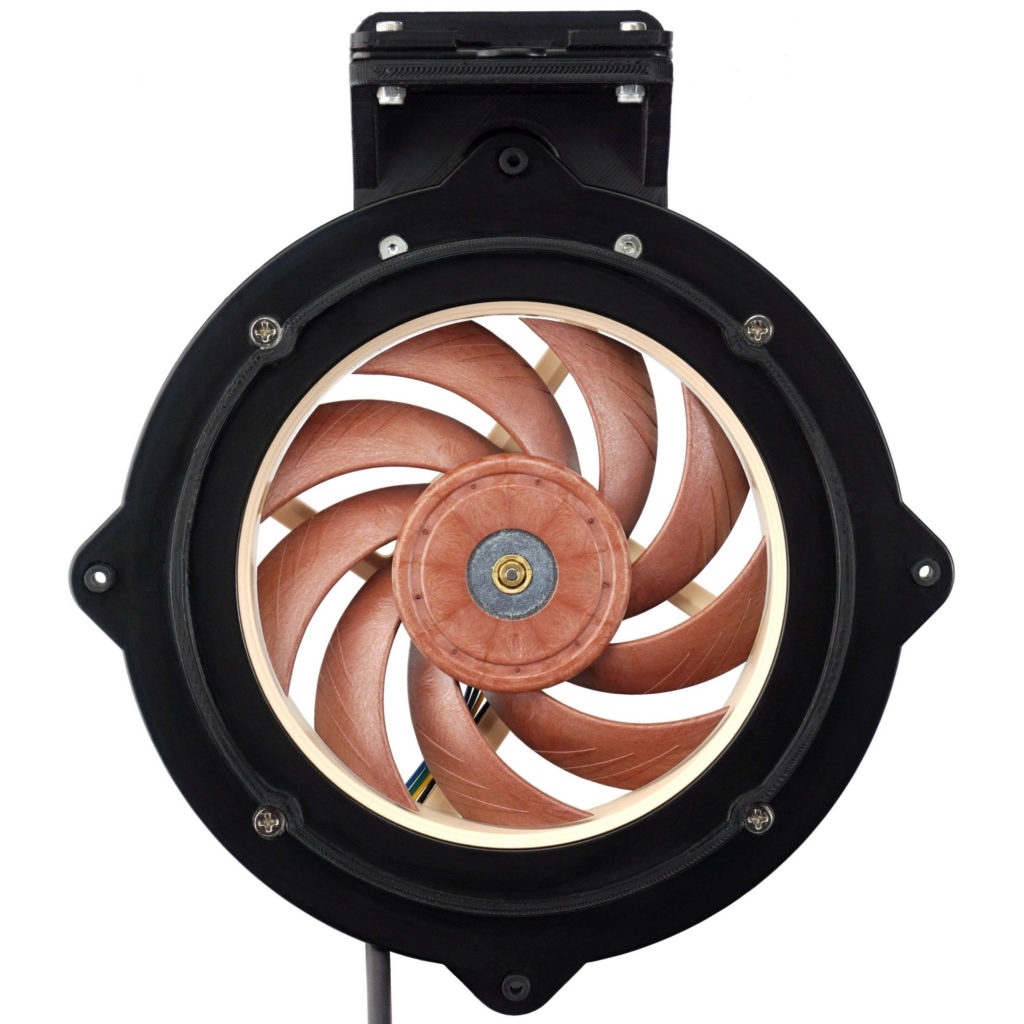
For correct and always equal pressure, the fans are always tightened with the same force with a torque screwdriver. If this were not the case, joints and clearances in the assembly could arise, in short, uneven conditions with undesirable distortion. For example, also for vibration measurement. On top of the fan mount there is also a bracket for the three-axis vibrometer sensor. The latter is magnetically attached via a steel insert, on which the sensor exerts a force of one kilogram and, thanks to the stop, is also always in the same place and in the same contact with the rest of the structure. These are the basics in terms of repeatability of measurements.
In order to capture the intensity at the highest possible resolution, the tray of the holder cannot be too heavy and at the same time it must be strong enough not to twist. This would again cause various distortions. Therefore, we used a hard (H19) aluminium (AL99.5) plate for the construction of the holder, whose weight is just enough so that free movement is not significantly restricted.
To achieve the finest possible resolution for vibration measurement, soft rubber inserts are provided in the mounting holes through which the bracket is installed to the tunnel. And just behind these inserts are silent blocks with a very low hardness of 30 Shore. These are also used so that the vibrations of the fans don’t spread to the tunnel skeleton. If this were to happen, then for fans with more intense vibrations, this secondary noise component, which is not related to the aerodynamic sound of the fan, would also be reflected in the noise measurement results.
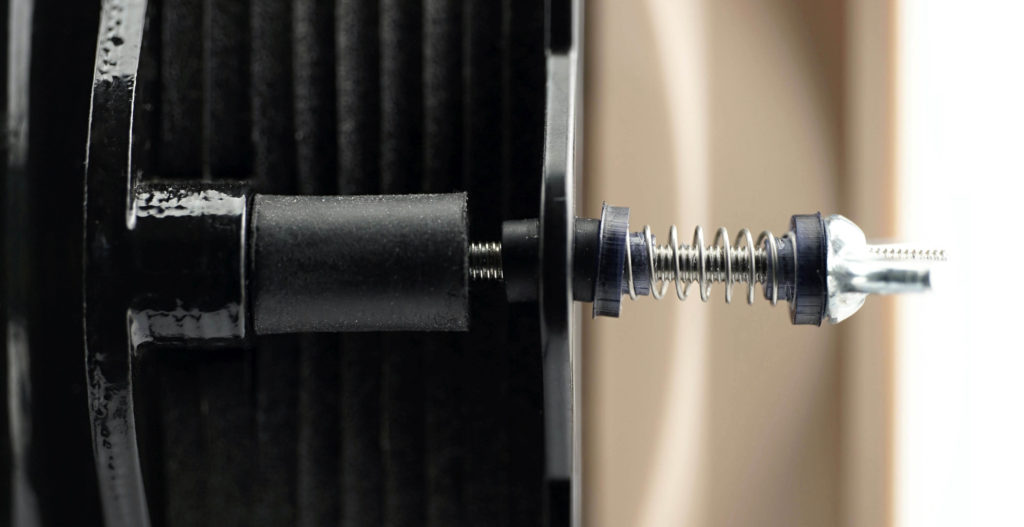
This is where it is good to have ideal conditions, even though they are unattainable in practice, because fan vibrations will always be transmitted to the case skeleton to some degree. But each cabinet will react differently to them, or rather the final noise level will depend on a number of factors, starting with the materials used. Therefore, it is a good idea to filter out this extra noise component in tests and in practice take into account the measured vibration intensities. The higher these vibrations are, the higher the noise addition has to be taken into account.
The silent blocks are naturally formatted to offset the bracket a bit from the rest of the tunnel, otherwise they wouldn’t make sense. This creates a gap that is sealed across the entire surface with a soft foam seal with closed cell structure (i.e., it’s airtight).
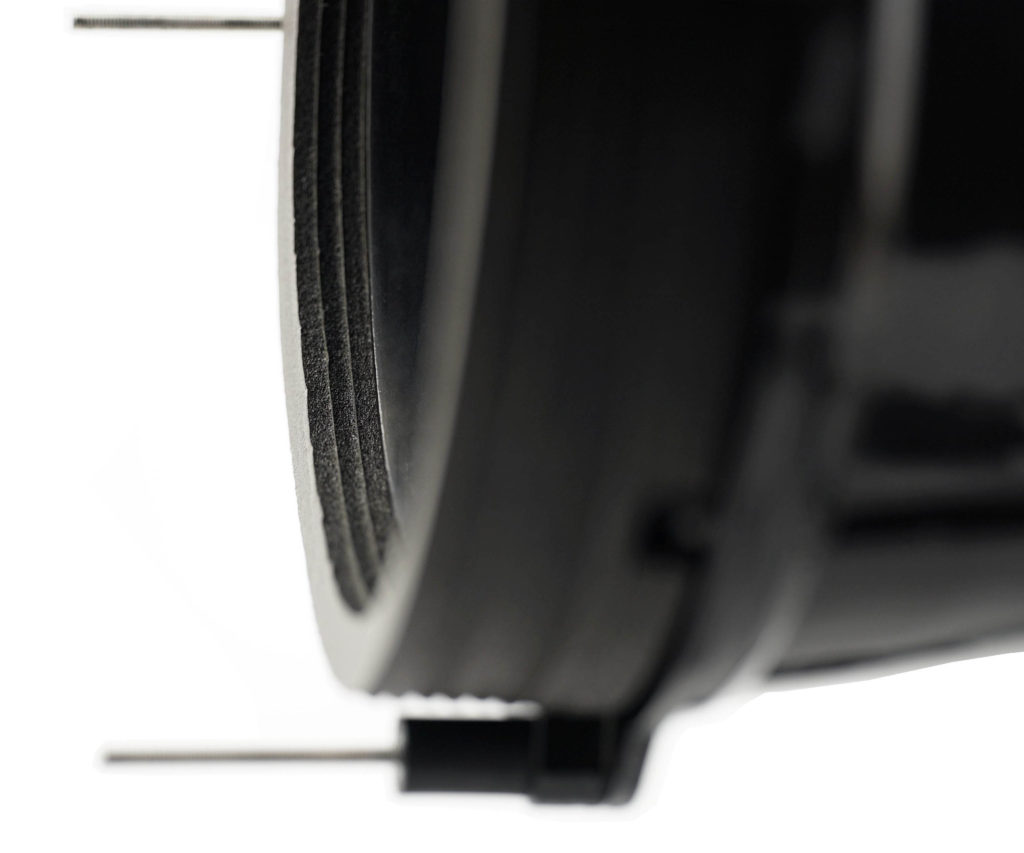
To properly center the fan rotor in relation to the other elements, the bracket includes a protruding frame that follows the inner contour of the seal. And to make matters even more complicated, the frame with the tested fan is pressed against this seal by a small force of compression springs, which in turn is set with the highest possible resolution for vibration measurement in mind and at the same time so that sufficient pressure is generated to maintain a flawless seal.
Vibration is measured with a Landtek VM-6380 vibration meter. It records the vibration speed (in mm) per second in all axes (X, Y, Z). For quick orientation, we calculate a 3D vector from the measured values and graph the “total” vibration intensity. But you can also find your results if you are only interested in a specific axis.
The most complicated part of the tunnel is behind us, and we’ll move on in the next chapter. But we will still stay at the beginning of the tunnel, we will just turn to the peripheries on the sides.
- Contents
- Nidec Servo Gentle Typhoon D1225C (2150/12) details
- The basis of the methodology, the wind tunnel
- Mounting and vibration measurement
- Initial warm-up and speed recording
- Base 6 equal noise levels…
- ... and sound color (frequency characteristic)
- Static pressure measurement…
- … and airflow
- Everything changes with obstacles
- How we measure power draw and motor power
- Measuring the intensity (and power draw) of lighting
- Results: Speed
- Results: Airlow w/o obstacles
- Results: Airflow through a nylon filter
- Results: Airflow through a plastic filter
- Results: Airflow through a hexagonal grille
- Results: Airflow through a thinner radiator
- Results: Airflow through a thicker radiator
- Results: Static pressure w/o obstacles
- Results: Static pressure through a nylon filter
- Results: Static pressure through a plastic filter
- Results: Static pressure through a hexagonal grille
- Results: Static pressure through a thinner radiator
- Results: Static pressure through a thicker radiator
- Results: Static pressure, efficiency by orientation
- Reality vs. specifications
- Results: Frequency response of sound w/o obstacles
- Results: Frequency response of sound with a dust filter
- Results: Frequency response of sound with a hexagonal grille
- Results: Frequency response of sound with a radiator
- Results: Vibration, in total (3D vector length)
- Results: Vibration, X-axis
- Results: Vibration, Y-axis
- Results: Vibration, Z-axis
- Results: Power draw (and motor power)
- Results: Cooling performance per watt, airflow
- Results: Cooling performance per watt, static pressure
- Airflow per euro
- Static pressure per euro
- Results: Lighting – LED luminance and power draw
- Results: LED to motor power draw ratio
- Evaluation





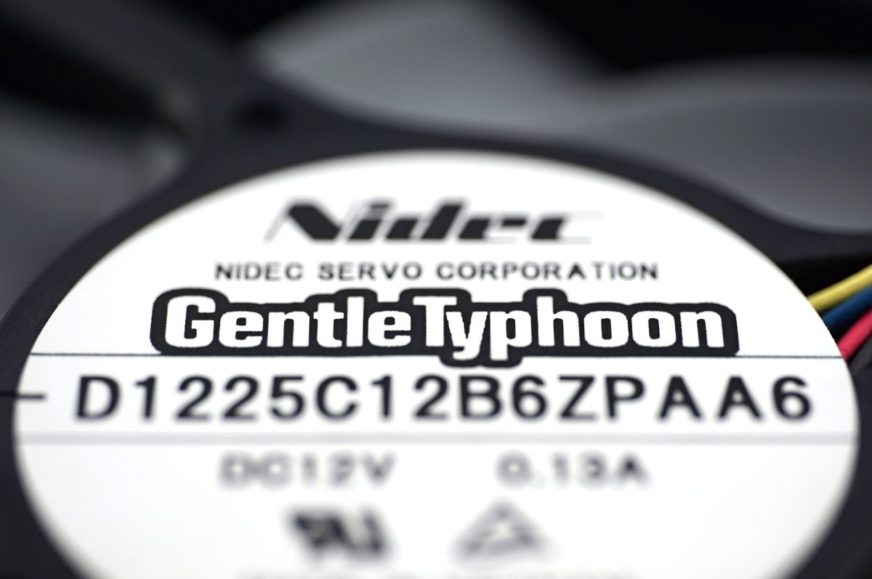
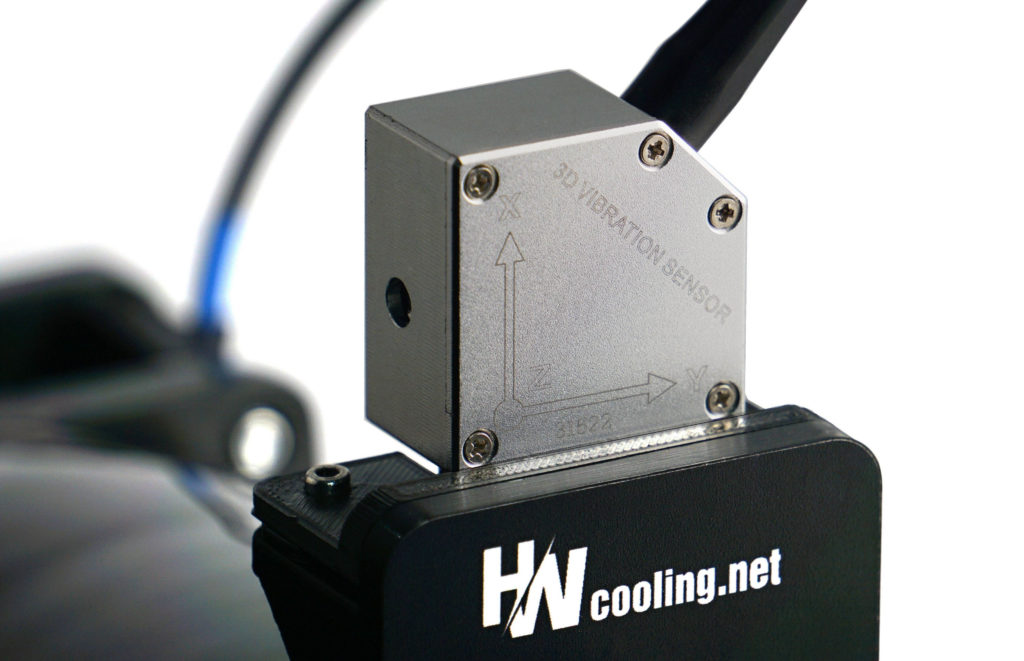
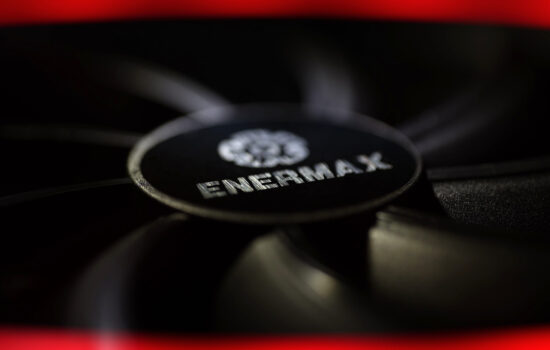





GentleTyphoon is the name of a family of industrial axial fans designed and manufactured by Nidec-Servo
The D1225C achieves an aerodynamic design that pushes the limits of material and injection mold engineering at a constrained cost (the material used for the fan blades is probably only half as stiff as the LCP material used by NOCTUA), and to mass produce fan blades with the potential for significantly improved performance at the same specification I think has until now been limited by the injection mold and process and material properties.
One more thing, this seems to be the only 120mm axial fan I’ve seen with a removable motor stator – they are held in the bearing housing by springs and catches and are easy to maintain.
Scythe should only be a PC cooling OEM brand, the development and manufacturing of D1225C is always done by Nidec-Servo
The most common product from Nidec contained in the PC is probably the FDB bearing motor inside the HDD.
https://www.dempa.co.jp/productnews/kobetu/091130/1130_02.html
Thank you for that comment, you obviously have that fan very well studied. I’ll admit that I was convinced that first those fans were at least designed by Scythe and then that brand was sold to Nidec Servo. But it is true that Nidec Servo also appears as the manufacturer on the labels of fans that still bore the Scythe logo.
You’re right. We’ve adjusted the labelling in the charts to make it right.
“Nidec Servo Gentle Typhoon D1225C12B6ZPAA6” is too long and we can’t fit it into the charts like this. But it’s true that after cutting even D1225C, it’s incorrect, although it’s clarified right at the beginning of this article (it would be unclear in the next ones, where this fan will appear in the graphs). So we compromised with “NS Gentle Typhoon DC1225C (2150/12)”, where the model designation in parentheses is the speed/voltage. That works out in the charts, and is now hopefully a pretty accurate and unambiguous designation for this particular fan. 🙂
Of the 120mm fans, the Enermax Magma or even the recently released ThermalTake SWAFAN 12/14 have user level removable rotors.
Not the rotor, I mean the stator windings, PCB and leads,that are only visible after removing the rotor,they are usually held in place by interference fit or glue in the bearing housing and cannot be replaced properly. ↓
https://imgbox.com/V5hiiR4z
https://imgbox.com/aUwVev3k
Your reviews and test data are invaluable! Thank you for the work of your team?
Now we’re clear, okay. We will also discuss the selected fans later at HWC. Especially with regard to examining bearings and things around them. Still, it’s a bit strange for fans with fluid bearings, for example, to have such a large variance in MTBF.
Personally, I believe that in the vast majority of fans there is no real FDB, those “fluid dynamic” bearings are just an imitation of the marketing of the SPM bearings on the HDD, or essentially a variant of the original fan sliding bearings, and most of these bearings seem to be processed by low-temperature alloy, very fragile, but once the lubricant failure is easy to Failure.
Currently, the only fan bearings I’ve ever disassembled that match the SPM bearings on the HDD are in the RTX4090 fan, complete with thrust bearings and the exact same structure and material as the HDD disk bearings, also from Nidec.
Even so, I personally think it is unlikely that such a bearing will operate completely on the fluid dynamic pressure layer when working in the fan (unstable working conditions and too low speed).
Thank you for your perspective. Sure, it could easily be exactly as you describe.
L10 is generally used for marking the life expectancy of fans in industrial environments.
MTBF is actually a very ambiguous value, and manufacturers can be very flexible in their interpretation of it.
But even the L10 value is not exactly the same across companies’ testing standards, and the life expectancy of a fan is very difficult to verify by a third party (just as the life expectancy of an HDD has long become an illusory value).
Yes, I agree. MTBF/MTTF… a range would be more useful.
Even when disassembled, there are many difficulties in assessing the life of a fan, such as the performance of the lubricant, the accuracy and rigidity of the sleeve, the effective stock of lubricant and the loading capacity of the oil film, which are in fact difficult to identify through disassembly, but these implied performance indicators are critical to the life, and only some rough analysis can be made from the structure, such as whether the axial load response of the sleeve bearing is present and effective, the existence of sealing structure, the length of the sleeve, etc.
Even for double ball bearings, the axial support length of the two bearings (which will significantly control the impact of rotor oscillation in operation), preload pressure, bearing housing and arbor and ball bearing inner and outer ring fit accuracy, motor drive and specific operating load and operating conditions will greatly affect the life and failure rate, the wrong design of double ball bearing fans will induce early failure and thus lead to a shorter life than the sleeve This has happened in the current products.
In addition to this, the drive scheme and electrical reliability of the fan’s brushless motor will also have a significant impact on life, as will the mounting of the Hall sensor and the overall current efficiency of the motor. (For example, phanteks T30 has a more advanced FOC three-phase sensorless motor drive compared to competing products)
I have disassembled many cooling fans and if you are interested I can share photos and some simple information via email when I have some free time.
I keep hoping that these will one day help someone who needs it.
Of course, even a fan with a more delicate bearing can have a longer life, as long as it is better able to prevent lubricant leakage or hardening (e.g. by dust particles entering and mixing with it). A detailed analysis of a disassembled fan could shed more light on these things too. Anyway, it’s not something we want to get into tomorrow. Naturally, like everything, it requires proper preparation to make the outputs relevant.
If you would be willing to send us your analyses of disassembled fans by email, preferably in the form of an article that we would republish, we would be honored. When you have time, you can email me at samak@hwcooling.net and we’ll work it out somehow. The insights from such an examination will certainly help a lot of people. 🙂
Not the rotor, but the stator windings and PCB and leads that are visible when the rotor is removed ↓ Normally these parts are held in the bearing housing by interference fit or glue.↓
https://imgbox.com/V5hiiR4z
https://imgbox.com/aUwVev3k
Thanks for your team’s work! Your detailed reviews are very helpful to me ?
as expected, the design works well, but the finetuning and material engineering made by Noctua proved to be unbeatable once again, especially when you are aiming at total silence, below values presented here, as the lower sound pressure goes the bigger lead A12x25 has
Yes, the lower the noise level, the greater the contribution of non-aerodynamic sounds. You can see this well in the “33 dBA, no obstacle” spectrograph for example, where the GT DC1225 is, between 1–2 kHz (motor and bearings), significantly noisier than the Noctua NF-A12x25.